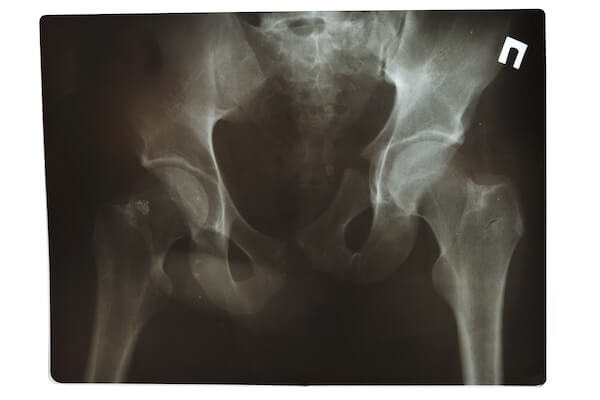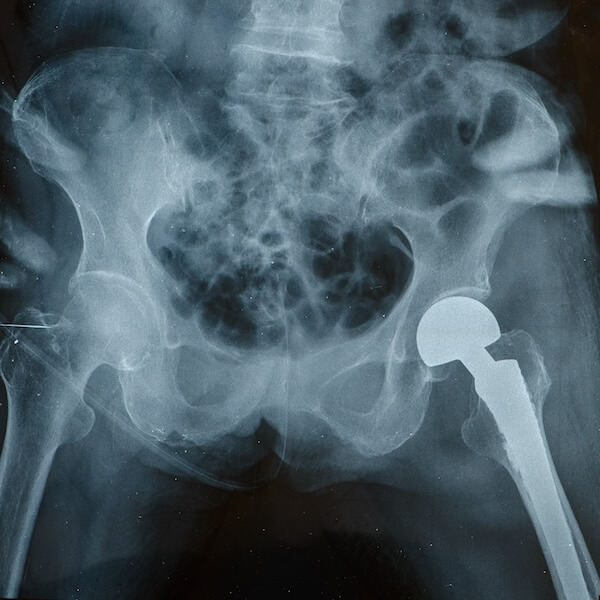The hip joint is vital for many load-bearing activities, enabling movements such as walking, running, and sitting. Common issues with the hip include hip arthritis, avascular necrosis, and other hip injuries, often leading to hip pain and joint damage.
Stem cell therapy for hips is emerging as a promising alternative to hip replacement surgery, offering a non-surgical option for pain relief and tissue regeneration.
This therapy involves stem cell injections from sources like bone marrow and abdominal adipose tissue, promoting tissue repair and reducing pain. Research suggests that mesenchymal stem cells can help regenerate damaged cartilage and improve overall hip joint function .

GET IN TOUCH
Filling out this form is the fastest way to reach our team, once completed please be sure to check your email inbox for a confirmation message.
Understanding the role of Stem Cells for Hips
Stem cells are unique cells with the remarkable ability to develop into different cell types, making them essential for tissue regeneration and repair. Their regenerative properties make them invaluable in stem cell therapy, particularly for treating musculoskeletal conditions.
There are various types of stem cells used in treatment, with mesenchymal stem cells being particularly effective for musculoskeletal issues. Sourced from bone marrow or adipose tissue, these cells can differentiate into bone cells, cartilage, and other tissues.
Stem cell injections target damaged areas, such as the hip joint, promoting repair and reducing hip pain.
This non-invasive stem cell procedure involves extracting mesenchymal stem cells from the patient's bone marrow or abdominal adipose tissue and injecting them directly into the damaged tissue.
These stem cells aid in tissue regeneration by developing into new cells that replace the damaged cartilage and bone cells, thus enhancing the healing process.
Stem cell treatment may offer an alternative to hip replacement surgery, facilitating natural tissue regeneration and improving joint function.
Research has shown that stem cell therapy can effectively reduce pain and improve mobility, making it a viable option for patients seeking less invasive treatment options.
This approach leverages the body's natural healing mechanisms, potentially delaying or even eliminating the need for hip replacement.
Stem Cell Therapy vs Hip Replacement Surgery

Stem cell therapy and hip replacement surgery are two distinct approaches to treating hip conditions, each with its advantages and disadvantages. Stem cell therapy, a non-surgical option, involves injecting stem cells into the hip joint to promote tissue repair and regeneration. This procedure is minimally invasive compared to hip replacement surgery, which involves removing the damaged hip joint and replacing it with an artificial one.
One of the main advantages of stem cell therapy is its non-surgical nature, which translates to a quicker recovery time. Patients undergoing stem cell therapy typically experience less pain and fewer complications compared to those undergoing hip replacement surgery. Additionally, stem cell therapy requires a shorter rehabilitation period, allowing patients to return to their daily activities more quickly. Research has shown that stem cell injections can reduce hip pain and improve joint function, making it an attractive alternative for many patients.
However, hip replacement surgery remains a highly effective treatment for severe hip conditions, especially when the joint damage is extensive. The success rates of hip replacements are well-documented, and the procedure can provide significant pain relief and improved mobility. On the downside, hip replacement surgery involves a more extended hospital stay, a higher risk of complications, and a longer rehabilitation period.
Stem cell therapy for hips and hip replacement surgery are two distinct approaches for addressing hip pain and joint damage. Both methods aim to improve mobility and reduce pain, but they differ significantly in their procedures and recovery processes.
Advantages of Stem Cell Therapy
One of the most significant advantages of stem cell therapy is its non-surgical nature. Stem cell therapy involves stem cell injections, which are less invasive compared to hip replacement surgery.
The procedure typically involves extracting stem cells from bone marrow or abdominal adipose tissue and injecting them directly into the damaged hip joint.
This minimally invasive approach results in a quicker recovery time and reduced risk of complications. Stem cell therapy also offers pain relief by promoting tissue regeneration and repair, targeting damaged tissue and cartilage loss directly.
Disadvantages of Stem Cell Therapy
Despite its benefits, stem cell therapy is still in the early phases of research. While initial results are promising, long-term efficacy data is still being collected. Additionally, the cost of stem cell procedures can be high, and they may not be covered by insurance.
Advantages of Hip Replacement Surgery
Hip replacement surgery has been a well-established treatment for severe hip arthritis and joint damage. This invasive surgery involves replacing the damaged hip joint with a prosthetic one, which can provide significant pain relief and improved mobility for patients. The procedure has a long track record of success, particularly for patients with advanced joint damage.
Disadvantages of Hip Replacement Surgery
However, hip replacement surgery is highly invasive, involving substantial risks such as infection, blood clots, and longer rehabilitation periods. Recovery can take several months, during which patients may experience significant muscle soreness and require extensive physical therapy.
Types of Hip Conditions Treated with Stem Cell Therapy
Stem cell therapy for hips can effectively treat a variety of hip conditions by targeting joint damage, damaged cartilage, and other hip injuries. Some of the conditions treated with stem cell therapy include:
Hip Arthritis
Stem cell therapy can help manage hip arthritis by reducing inflammation and promoting the regeneration of cartilage and bone cells. The injected stem cells target the hip joint, aiding in tissue repair and reducing hip pain.
Avascular Necrosis
Avascular necrosis, a condition characterized by the death of bone tissue due to lack of blood supply, can be treated with stem cell therapy. The regenerative properties of stem cells help restore blood vessels and regenerate damaged tissue in the pelvic bone and hip joint.
Hip Injuries
Stem cell therapy is also effective in treating hip injuries, such as labral tears and cartilage loss. The therapy promotes tissue regeneration, helping to repair damaged cartilage and improve joint function.
Tissue Degeneration
Conditions involving tissue degeneration, such as tendonitis and bursitis, can also benefit from stem cell therapy. The stem cells aid in the regeneration of damaged tissues, providing pain relief and improving mobility.
Stem cell therapy offers a promising treatment option for various hip conditions by promoting tissue repair and regeneration, reducing the need for invasive surgery.
The Role of Physical Therapy Post-Treatment
Physical therapy plays a crucial role in the recovery process following stem cell treatment. It helps patients maximize the benefits of the procedure and restore hip function and strength.
Aids in Recovery
Physical therapy aids in recovery by guiding patients through specific exercises designed to strengthen the hip joint and surrounding muscles. These exercises help improve mobility, reduce pain, and prevent further injury.
Maximizes Benefits
By incorporating physical therapy into the recovery plan, patients can ensure that the stem cell treatment's benefits are fully realized. Physical therapists provide personalized exercise routines that target weakened areas, promoting overall strength and stability.
Restores Function
Guided exercises, such as stretches and strength training, are essential for restoring hip function. These exercises help improve flexibility, strengthen the hip joint, and enhance coordination, allowing patients to return to their normal activities.
Incorporating physical therapy post-treatment is vital for achieving the best possible outcomes from stem cell therapy. It helps patients recover more quickly and maintain the improvements gained from the procedure.
Safety and Efficacy of Stem Cell Therapy
Stem cell therapy for hips has shown a promising safety profile, with a low risk of complications and encouraging results from early research.
Low Risk of Complications
Stem cell injections are less invasive than surgical procedures, resulting in a lower risk of complications. Patients typically experience minor side effects at the injection site, such as swelling or discomfort, which are temporary.
Promising Results
Early phases of research indicate that stem cell therapy can effectively reduce pain and improve hip function. Studies have shown that stem cell treatment can promote tissue regeneration and repair, leading to significant improvements in mobility and quality of life.
Growing Evidence
The growing body of evidence supporting stem cell therapy's effectiveness includes patient testimonials and clinical studies. Patients have reported significant pain relief and improved function following treatment, highlighting the therapy's potential benefits.
